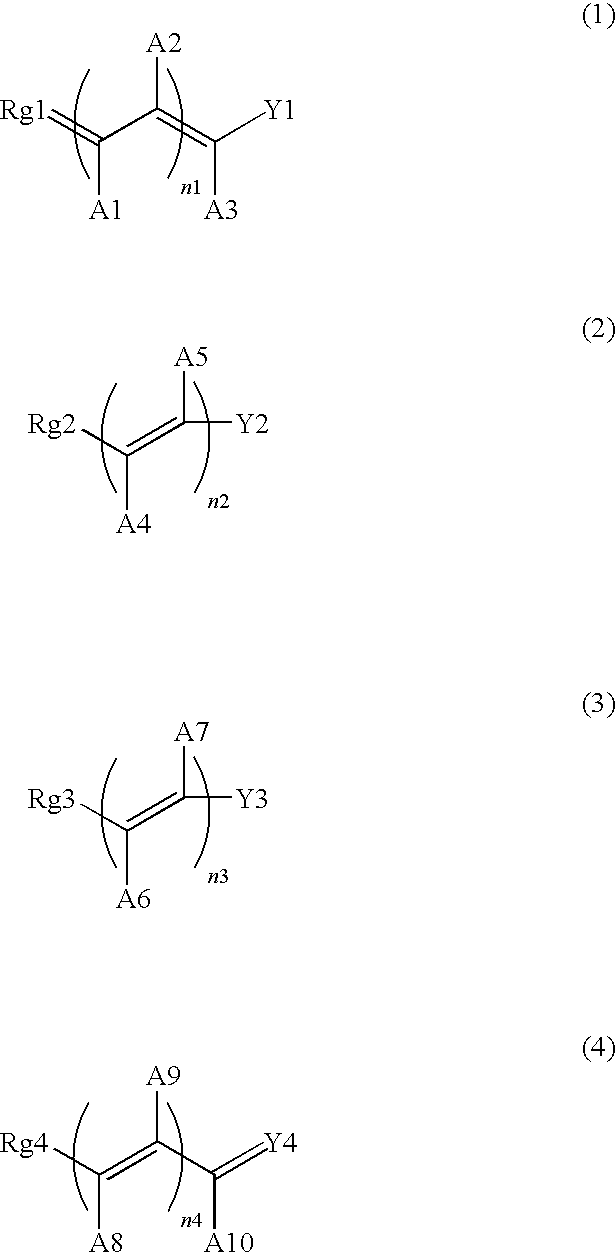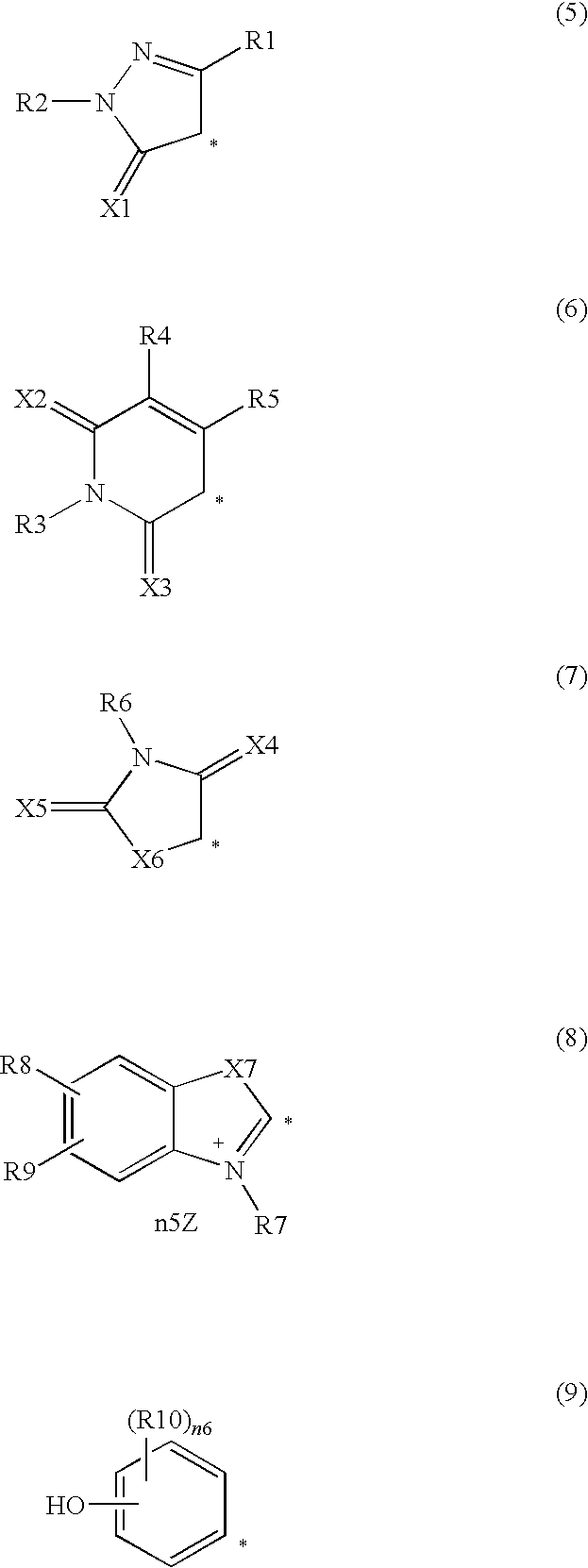Dye-sensitized photoelectric conversion device
a photoelectric conversion device and dye sensitization technology, applied in the field of semiconductor fine materials, can solve the problems of not being widely accepted in the market, not being put into practical use, high cost and low supply, etc., and achieve the effect of high conversion efficiency
- Summary
- Abstract
- Description
- Claims
- Application Information
AI Technical Summary
Benefits of technology
Problems solved by technology
Method used
Image
Examples
synthesis example 1
[0438]Two parts of 1-phenyl-3-carboxy-5-pyrazolone and 1.7 parts of 4-(dimethylamino)benzaldehyde were mixed in 20 parts of ethanol and 0.2 parts of piperazine anhydride were added thereto. The reaction was carried out under reflux for 2hours. The solid obtained after cooling was filtered, washed, dried, then recrystallized from ethanol and consecutively filtered, washed and dried to give 2.2 parts of compound (1).
[0439]Absorption maximum (ethanol): 506 nm
synthesis example 2
[0440]Two parts of 1-phenyl-3-carboxy-5-pyrazolone and 2 parts of 4-(dimethylamino)cinnamaldehyde were mixed in 20 parts of ethanol and 0.2 parts of piperazine anhydride were added thereto. The reaction was carried out under reflux for 2 hours. The solid obtained after cooling was filtered, washed, dried, then recrystallized from ethanol and consecutively filtered, washed and dried to give 2.3 parts of compound (35).
[0441]Absorption maximum (ethanol): 556 nm
synthesis example 3
[0442]One part of 1-phenyl-3-carboxy-5-pyrazolone and 1.5 parts of 4-(diphenylamino)cinnamaldehyde were mixed in 10 parts of ethanol. The reaction was carried out under reflux for 2 hours. The solid obtained after cooling was filtered, washed, dried, then recrystallized from ethanol and consecutively filtered, washed and dried to give 1.8 parts of compound (36).
[0443]Absorption maximum (ethanol): 506 nm
PUM
| Property | Measurement | Unit |
|---|---|---|
| particle diameter | aaaaa | aaaaa |
| particle diameter | aaaaa | aaaaa |
| average primary particle diameter | aaaaa | aaaaa |
Abstract
Description
Claims
Application Information
 Login to View More
Login to View More - R&D
- Intellectual Property
- Life Sciences
- Materials
- Tech Scout
- Unparalleled Data Quality
- Higher Quality Content
- 60% Fewer Hallucinations
Browse by: Latest US Patents, China's latest patents, Technical Efficacy Thesaurus, Application Domain, Technology Topic, Popular Technical Reports.
© 2025 PatSnap. All rights reserved.Legal|Privacy policy|Modern Slavery Act Transparency Statement|Sitemap|About US| Contact US: help@patsnap.com



